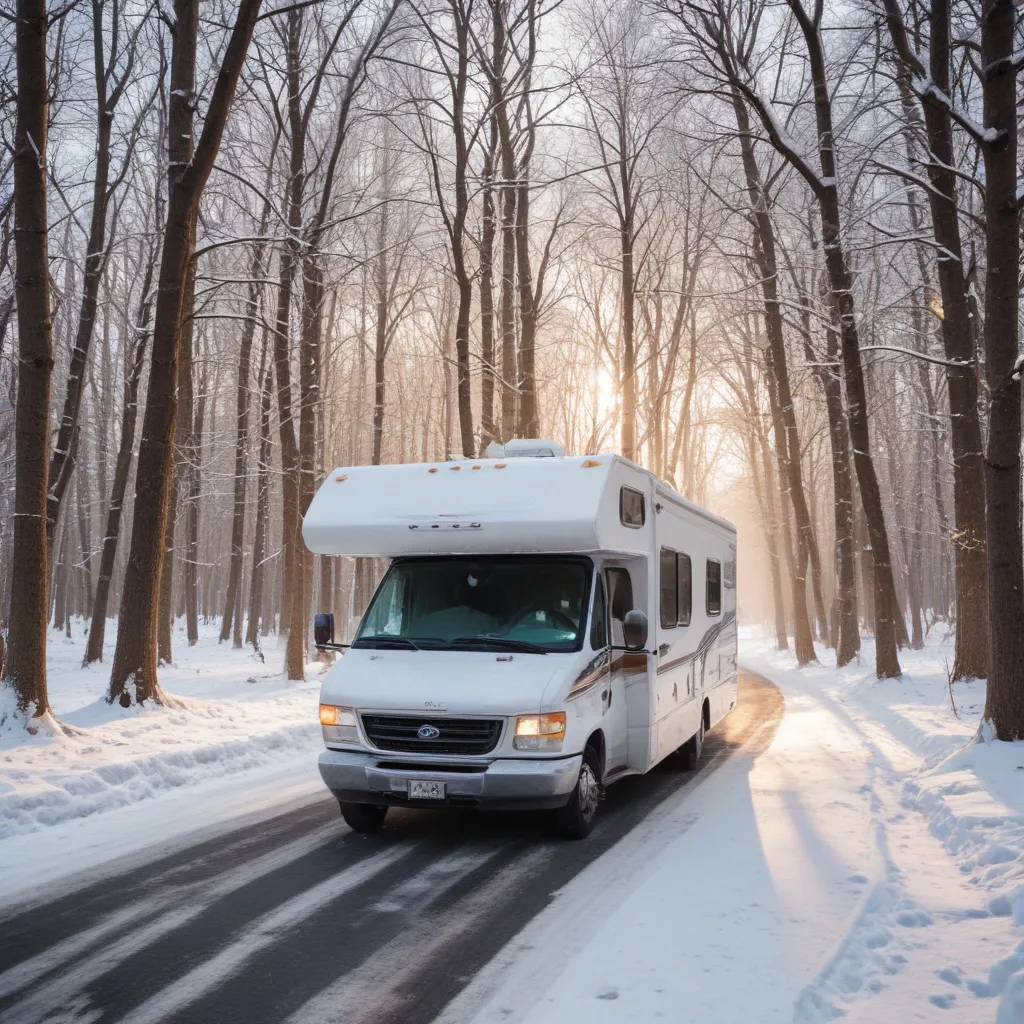
Understanding the Importance of Winterizing
As the crisp autumn air starts to settle in and the leaves begin their graceful descent, a sense of excitement starts to brew within me. You see, I’m an avid RV enthusiast, and this time of year means it’s time to start thinking about winterizing my beloved home-on-wheels. Now, I know what you’re thinking – “Winterizing? Isn’t that just a fancy term for draining the water and covering it up?” Well, my friends, let me tell you, there’s so much more to it than that.
Proper winterization is the key to ensuring your RV survives the cold winter months unscathed. It’s like an insurance policy for your investment, protecting it from the harsh elements and ensuring it’s ready to hit the road come springtime. Neglecting this crucial step can lead to a whole host of issues, from burst pipes and damaged appliances to mold and mildew buildup. And trust me, you don’t want to be that person who has to deal with the headache and expense of dealing with those problems.
Preparing Your RV for Hibernation
Now, where do we begin? Well, the first step is to assess the condition of your RV. Take a good, hard look at it and make a mental note of any issues or areas that might need some extra attention. Is there any visible damage or wear and tear? Are the tires in good condition? Have you noticed any leaks or strange noises? Addressing these concerns before you start the winterization process can save you a lot of trouble down the line.
Once you’ve got a handle on the overall state of your RV, it’s time to roll up your sleeves and get to work. The first and most obvious task is to drain the water system. This includes the fresh water tank, the water heater, and all the pipes and lines. Leaving any water in the system can lead to frozen pipes and costly repairs. To make sure you get every last drop, I like to use a compressed air system to blow out any remaining water. It’s like giving your RV a good old-fashioned sinus flush!
Protecting Your RV’s Vital Components
But wait, there’s more! Winterizing your RV is a multi-step process, and the next item on the agenda is protecting your appliances. Start by giving your refrigerator a good cleaning and defrosting, then make sure to turn it off and prop the door open to prevent any funky smells from taking up residence. Next, check your water heater and either drain it or bypass it entirely. And don’t forget about your air conditioning unit – you’ll want to cover that up to keep the elements out.
Speaking of the elements, it’s time to tackle the exterior of your RV. Give it a good wash and wax to protect the finish, then check the sealants around the windows, vents, and other openings. These are the perfect entry points for water, snow, and critters, so make sure they’re in tip-top shape. And while you’re at it, don’t forget to clean out the awning and store it properly.
Winterizing Your RV’s Interior
Now, let’s turn our attention to the inside of your RV. Start by emptying out the refrigerator and freezer, and make sure to remove any perishable items. Next, give the entire interior a good cleaning – vacuum the carpets, wipe down the surfaces, and tackle any nooks and crannies that might have accumulated dust or grime. This will help prevent the dreaded musty smell from taking over when you open it back up in the spring.
But we’re not done yet! It’s important to protect your RV’s interior from the elements as well. Invest in some high-quality covers for your furniture and consider placing desiccant packets throughout the space to absorb any lingering moisture. And don’t forget about the windows – you’ll want to cover those up to keep the cold air out and the warm air in.
Proper Storage and Maintenance
Now, the final step in the winterization process is to find the perfect spot to store your RV. Ideally, you’ll want to keep it in a dry, well-ventilated area, away from the elements. If you don’t have the luxury of a garage or storage facility, consider investing in a quality RV cover to protect it from the elements.
But even with all the preparation in the world, your RV will still need a little bit of TLC while it’s in hibernation. Make sure to check on it periodically, and be on the lookout for any signs of trouble, like rodent activity or water damage. And when the time comes to take it out of storage, give it a good once-over before hitting the road.
Conclusion: Embrace the Winterization Process
At the end of the day, winterizing your RV might seem like a daunting task, but trust me, it’s worth it. Not only will it help ensure your home-on-wheels is in tip-top shape come springtime, but it can also save you a lot of money and headaches down the line. So embrace the process, take your time, and take pride in the fact that you’re being a responsible RV owner.
And who knows, maybe you’ll even have a little fun in the process! Personally, I find the whole ritual of winterizing my RV to be a bit like a dance – a choreographed series of steps that, when executed perfectly, results in a beautifully preserved and protected vehicle. It’s a labor of love, to be sure, but one that’s well worth the effort.
So, what are you waiting for? Grab your tools, put on your thinking cap, and let’s get to work on winterizing your RV the right way. Your future self will thank you, I promise.
